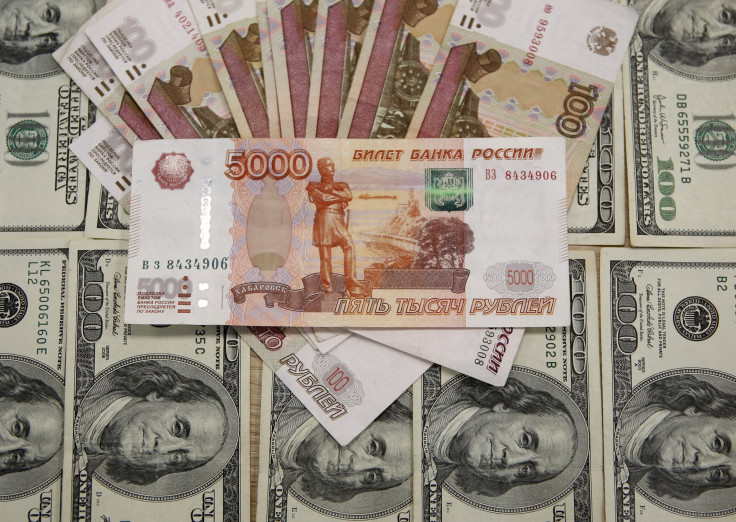Russian Ruble Passes 80 To U.S. Dollar, Historic Milestone As Oil Tumbles

MOSCOW — The Russian currency hit a historical low Wednesday as it went through 80 to the U.S dollar for the first time since the 1998 currency crisis. The ruble’s extended slide has occurred in sync with the decline in the price of oil, Russia’s chief export, reducing the Kremlin’s spending power and causing problems for President Vladimir Putin.
The ruble dropped sharply as markets opened in Moscow and shortly after 2 p.m. local time was worth 80.3 against the U.S. dollar: less than the the previous post-1998 low of 80.1 recorded in December 2014 during a run on the ruble and widespread panic in the currency market. The fall of the ruble against the greenback over the past month topped 10 percent.
Benchmark Brent crude dropped to below $28 a barrel Wednesday, a 13-year low, and its recent decline has compounded the ruble weakness caused by previous falls in commodity prices and Western sanctions imposed on Moscow over the Ukraine crisis. The Russian currency declined 24 percent in 2015.
“The pressure on the ruble has resumed after a small breathing space,” Denis Davydov, a currency analyst at Nordea Bank, wrote in an investment note Wednesday.
The prolonged fall of the ruble has prompted speculation that the Central Bank of Russia will step in to help buoy the currency. A majority of analysts polled by news agency Bloomberg Wednesday said if the ruble reaches 90 against the dollar the bank will begin its first foreign-currency sales in over a year.
The last time the Russian ruble reached these levels was in the late 1990s when the central bank ran out of reserves to protect the ruble, causing a series of quick devaluations, rapid inflation and the Russian government defaulting on its debt.
The precipitous tumble suffered by crude oil in recent months has been sending shock waves across Russia and the region. This week, the oil-rich Caspian nation of Azerbaijan imposed capital controls amid a currency crisis that has triggered public protests and forced the authorities to close exchange points.
In Moscow, where energy exports account for about 50 percent of state revenue, the oil price collapse is presenting severe problems for a government already struggling to deal with the sharpest economic contraction since 2009.
For Russia’s budget to balance in 2016 with current spending plans, it would require a dollar to be worth 210 rubles, according to a report by Bank of America Merrill Lynch cited by Russian news website RBC Wednesday. A 3 percent deficit, declared the maximum allowable by President Vladimir Putin in December, would require the ruble by fall to be worth 140 against the greenback, according to Bank of America Merrill Lynch.
Russia’s GDP shrank by up to 4 percent in 2015, and the International Monetary Fund Tuesday revised downward its predictions for the economy in 2016. The IMF now forecasts a contraction of 1 percent this year, compared with the 0.6 percent it predicted in October.
© Copyright IBTimes 2025. All rights reserved.






















